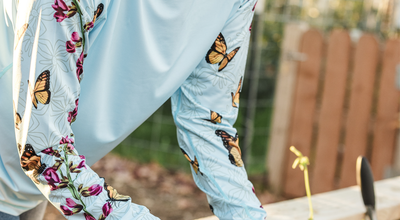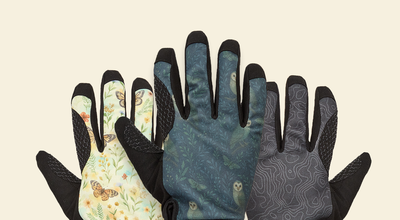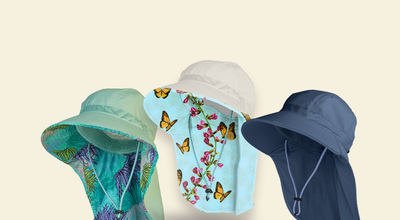Gardening and Allergies: How to Protect Yourself from Common Springtime Allergens in the Garden
If you're an avid gardener, you know that springtime can bring a bounty of beautiful blooms and lush foliage. Unfortunately, it can also bring a host of allergens that can cause discomfort and ruin your outdoor experience. Pollen, mold, and dust are just a few of the common triggers that can cause allergic reactions in the garden. By understanding these allergens and their sources, you can take the necessary precautions to protect yourself and ensure an enjoyable gardening experience.

Symptoms of Allergic Reactions in the Garden
Allergic reactions in the garden can be mild or severe, and their symptoms may include sneezing, itchy eyes, a runny nose, skin rashes, and difficulty breathing. In severe cases, exposure to allergens can cause anaphylaxis, a potentially life-threatening allergic reaction. If you experience any of these symptoms, seek medical attention immediately.
Hopefully some of these worst-case scenarios don’t take place. The best action taken is always preventative action.
Tips to Protect Yourself from Allergens in the Garden
To keep allergies at bay while gardening, try these tips:
- Wear protective clothing: Wear long-sleeved shirts, pants, and closed-toe shoes to minimize skin exposure to allergens. Consider using protective sleeves and neck gaiters, such as those offered by Farmers Defense, to cover your arms and neck.
- Use a mask: Wearing a mask can help prevent the inhalation of allergens, especially during activities like mowing the lawn or raking leaves. Look for masks that are designed to filter out allergens, such as pollen and mold.
- Limit outdoor activities: Try to avoid gardening or spending time outdoors during peak allergy season, which is typically in the spring and fall.
- Wash your clothes and body: After gardening or spending time outdoors, wash your clothes and take a shower to remove any allergens that may be on your skin or clothes.
Farmers Defense Products for Allergy Protection
Farmers Defense offers a range of protective gear, including sleeves and neck gaiters, that can be used to help protect against allergens in the garden. Made from high-quality materials, these products are designed to provide excellent protection and comfort.

The protective sleeves are made from breathable, heavy-duty fabric that is designed to block out allergens, while the neck gaiters provide full coverage of the neck and lower face. These products are perfect for gardeners who want to protect themselves from allergies without sacrificing comfort and mobility.
Q & A Section:
Q: How can I prevent allergies while gardening? A: To prevent allergies while gardening, you can wear protective clothing, use a mask, limit outdoor activities, and wash your clothes and body after being outdoors.
Q: Are there any natural remedies for allergy symptoms? A: Some natural remedies for allergy symptoms include consuming local honey, drinking nettle tea, using a saline nasal rinse, and taking supplements such as quercetin or vitamin C. However, it is important to note that these remedies may not work for everyone and should not be used as a substitute for medical treatment.
Q: Can wearing protective gear really make a difference in reducing allergy symptoms? A: Yes, wearing protective gear such as gloves, masks, sleeves, and neck gaiters can greatly reduce the amount of allergens that come in contact with the skin and respiratory system. Farmers Defense offers a variety of protective gear specifically designed for gardeners to help reduce exposure to allergens.

How to Choose the Right Plants for Allergy Sufferers
One of the best ways to prevent allergy symptoms is to choose the right plants for your garden. Here are some tips for selecting plants that are less likely to trigger allergies:
- Look for low-pollen plants: Some plants, such as cacti, ferns, and succulents, produce very little pollen and are less likely to trigger allergy symptoms. Choose these types of plants for your garden if you're an allergy sufferer.
- Avoid wind-pollinated plants: Wind-pollinated plants, such as trees, grasses, and ragweed, are more likely to release pollen into the air, making them a common trigger for allergy sufferers. Try to avoid planting these types of plants in your garden.
- Choose insect-pollinated plants: Insect-pollinated plants, such as roses, daisies, and marigolds, rely on insects to transfer pollen and are less likely to release large amounts of pollen into the air. These types of plants are a better choice for allergy sufferers.

Other Tips for Allergy Prevention in the Garden
In addition to wearing protective gear and choosing the right plants, there are other steps you can take to prevent allergy symptoms in the garden. These include:
- Keep your garden clean: Remove dead leaves, flowers, and other debris from your garden regularly to minimize the presence of mold and other allergens.
- Avoid chemical pesticides: Chemical pesticides can cause skin and respiratory irritation, making allergy symptoms worse. Use natural alternatives or opt for pest-resistant plants instead.
- Check the pollen count: Before heading out to the garden, check the pollen count in your area. If it's high, consider postponing your gardening activities for a day or two.
Conclusion
Gardening can be a wonderful hobby, but it's important to take steps to protect yourself from allergens in the garden. By following the tips outlined in this article, including wearing protective gear, choosing the right plants, and keeping your garden clean, you can minimize your exposure to allergens and enjoy your time in the garden without suffering from allergy symptoms.



























